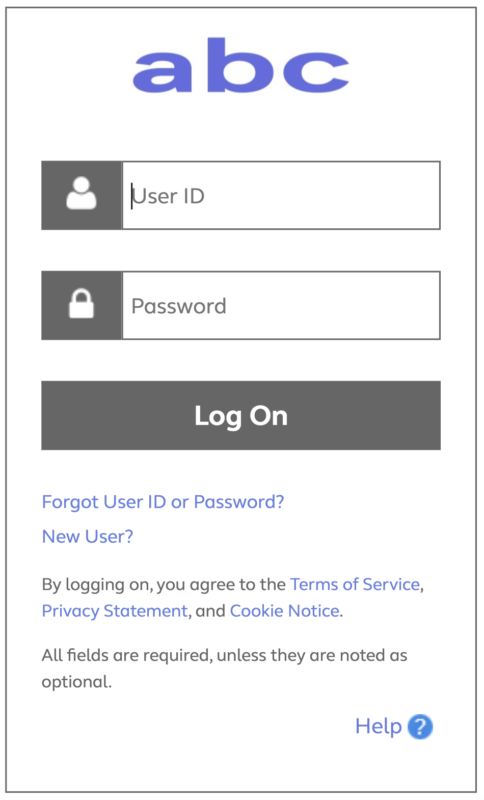Asurion provides a range of medical coverage options so you can choose the one that best meets the needs of your health and wallet. When you elect Asurion medical coverage, prescription coverage is included.
The Bronze Plus option may be the right choice for you if:
![]()
You want low per-paycheck contributions, i.e. premiums.
and

You don’t want to save money in a Health Savings Account to meet your deductible.
and
![]()
You like predictability—to know exactly what you’ll pay when you see a provider or fill a prescription, i.e. copayments (copays).
Before you make a final decision, however, we encourage you to examine the Bronze Plus option closely and think carefully about your healthcare needs.
Your cost
How much you’ll pay for a medical option is a three-component equation:
|
1 What you pay to have coverage |
2 What you pay when you need care |
3 What you save for future healthcare needs |
|
|---|---|---|---|
|
Monthly premiums |
Copayments (Copays) |
Deductible |
Healthcare savings |
|
Varies depending on ZIP code and coverage level |
Primary: $30 |
Employee only: $2,300 |
Flexible spending account |
|
|
|
|
![]()
A flexible spending account may be a smart way to manage your out-of-pocket healthcare expenses for the year. Just remember that you have to use the balance in your FSA annually or you forfeit the remainder. The Bronze Plus option offers you the same doctors as the Gold option, but with lower premiums and a higher deductible.
The Silver option may be the right choice for you if:
![]()
You want low per-paycheck contributions, i.e. premiums.
and
![]()
You don’t expect to use a lot of medical services, or you can easily afford an expense like an unexpected doctor’s visit or prescription.
and
![]()
You want to save money for healthcare expenses—including your deductible and coinsurance, as well as future needs—in a pretax Health Savings Account.
Before you make a final decision, however, we encourage you to examine the Silver option closely and think carefully about your healthcare needs.
Your cost
How much you’ll pay for a medical option is a three-component equation:
|
1 What you pay to have coverage |
2 What you pay when you need care |
3 What you save for future healthcare needs |
|
|---|---|---|---|
|
Monthly premiums |
Copayments (Copays) |
Deductible |
Healthcare savings |
|
Varies depending on ZIP code and coverage level |
You must pay the total cost of your service until you reach the deductible |
Employee only: $1,600 |
Health Savings Account |
|
|
|
|
You might be wondering if the Silver option will serve your needs well if you have a lot of medical and prescription expenses. It will—when you maximize your HSA savings. Consider the example below, showing someone with $5,000 of medical expenses in a year under the Gold and Silver options.
Comparison of $5,000 Annual Expenses

Silver option features a “True Family” deductible. If you enroll in any coverage other than Employee only, the “Family” deductible must be met before cost-sharing begins for any covered individual.
A Health Savings Account is available only with the Silver option because it is a high-deductible health plan (HDHP).
![]()
CONTRIBUTIONS
are pretax (so your gross pay is lower for tax purposes, too)

INTEREST
accrues untaxed
![]()
EXPENDITURES
for qualified expenses are tax-free
Bottom line: If you need predictability in cost or don’t want to save money in an HSA, the Silver option probably will not be a good fit.
The Gold option may be the right choice for you if:
![]()
You want a low annual deductible in exchange for higher premiums.
and

You don’t want to save money in a Health Savings Account to meet your deductible.
and
![]()
You like predictability—to know exactly what you’ll pay when you see a provider or fill a prescription, i.e. copayments (copays).
Before you make a final decision, however, we encourage you to examine the Gold option closely and think carefully about your healthcare needs.
Your cost
How much you’ll pay for a medical option is a three-component equation:
|
1 What you pay to have coverage |
2 What you pay when you need care |
3 What you save for future healthcare needs |
|
|---|---|---|---|
|
Monthly premiums |
Copayments (Copays) |
Deductible |
Healthcare savings |
|
Varies depending on ZIP code and coverage level |
Primary: $25 |
Employee only: $800 |
Flexible spending account |
|
|
|
|
![]()
A flexible spending account may be a smart way to manage your out-of-pocket healthcare expenses for the year. Just remember that you have to use the balance in your FSA annually or you forfeit the remainder.
California has two Gold options. The Gold II option is an HMO with only in-network benefits.
Gold |
Gold II |
|
|---|---|---|
|
PREVENTIVE CARE |
100% covered |
100% covered |
|
COPAYMENT (COPAY) |
$25 / $40 |
$25 / $40 |
|
DEDUCTIBLE |
$800 / $1,600 |
None |
|
COINSURANCE |
25% |
30% |
|
out-of-pocket maximum |
$3,600 / $7,200 |
$5,400 / $10,800 |
|
HEALTHCARE ACCOUNT |
Flexible spending account optional |
Flexible spending account optional |
|
PRESCRIPTION |
||
|
Tier 1 |
$10 |
$10 |
|
MEDICAL OPTION |
Preferred Provider Organization (PPO) |
Health Maintenance Organization (HMO) |
Notes: In-network rates shown only. PCP is your primary care physician. Deductible and out-of-pocket maximum listed as Employee only / Family.
The Platinum option may be the right choice for you if:
![]()
You don’t mind paying the highest premiums.
and

You don’t want to save money in a Health Savings Account for current or future healthcare needs.
and
![]()
You like the predictability of copayments when you see a provider or fill a prescription.
Before you decide, please carefully compare the premiums of all the metallic coverage options. For example, the money you’d save in premiums between the Platinum and Silver options could go into an HSA that lowers your taxable gross income and offers an investment opportunity.
Your cost
How much you’ll pay for a medical option is a three-component equation:
|
1 What you pay to have coverage |
2 What you pay when you need care |
3 What you save for future healthcare needs |
|
|---|---|---|---|
|
Monthly premiums |
Copayments (Copays) |
Deductible |
Healthcare savings |
|
Varies depending on ZIP code and coverage level |
Primary: $25 |
Employee only: $250 |
Flexible spending account |
|
|
|
|
![]()
A flexible spending account may be a smart way to manage your out-of-pocket healthcare expenses for the year. Just remember that you have to use the balance in your FSA annually or you forfeit the remainder.

BRONZE PLUS |
SILVER |
GOLD |
PLATINUM |
|
|---|---|---|---|---|
|
PREVENTIVE CARE |
100% covered |
100% covered |
100% covered |
100% covered |
|
PREMIUMS |
$ |
$ |
$$ |
$$$ |
|
COPAYMENT |
$30 / $50 |
You pay the cost of visit until deductible is met |
$25 / $40 |
$25 / $40 |
|
URGENT CARE |
$50 |
None |
$40 |
$25 |
|
DEDUCTIBLE |
$2,300 / $4,600 |
$1,600 / $3,200 |
$800 / $1,600 |
$250 / $500 |
|
COINSURANCE |
30% |
25% |
25% |
15% |
|
Out-of-pocket maximum |
$6,700 / $13,400 |
$3,800 / $7,600 |
$3,600 / $7,200 |
$2,300 / $4,600 |
|
HEALTHCARE ACCOUNTS |
FSA optional |
Dental and vision FSA optional |
FSA optional |
FSA optional |
|
PRESCRIPTION Copayment |
||||
|
Tier 1 |
$12 |
No copayments |
$10 |
$8 |
$-$$$ = Costs low to high
HOW OPTIONS
|
BRONZE PLUS |
SILVER |
GOLD |
PLATINUM |
|---|---|---|---|---|
|
PAY NOW OR PAY LATER? |
$ Monthly premium |
$ Monthly premium |
$$ Monthly premium |
$$$ Monthly premium |
|
HEALTHCARE SAVINGS ACCOUNTS? |
Medical, prescription, dental and vision expenses
|
Dental and vision expenses only
|
Medical, prescription, dental and vision expenses
|
Medical, prescription, dental and vision expenses
|
|
HSA (Health Savings Account) is available with Silver option |
No HSA |
All of the above and:
|
No HSA |
No HSA |
|
PREDICTABILITY? |
|
|
|
|
|
NETWORK? |
|
|
|
|
Heads up! You are leaving the ABC InfoShare. Unless you’re on the Asurion network, you’ll need your username and password to access Asurion Benefits Central at asurion.benefitsnow.com. Only current Asurion employees may log in.

If you don’t have the required log-in details, select Forgot User ID or Password? and follow the prompts. If this is your first visit to Asurion Benefits Central, click New User?
Questions: Call 844.968.6278.
Use the pricing tool to estimate your out-of-pocket expenses before you lock-in your healthcare coverage choices. After you click the link, you’ll be directed to a log-in page that will require a password that you can request from your Human Resources Business Partner.